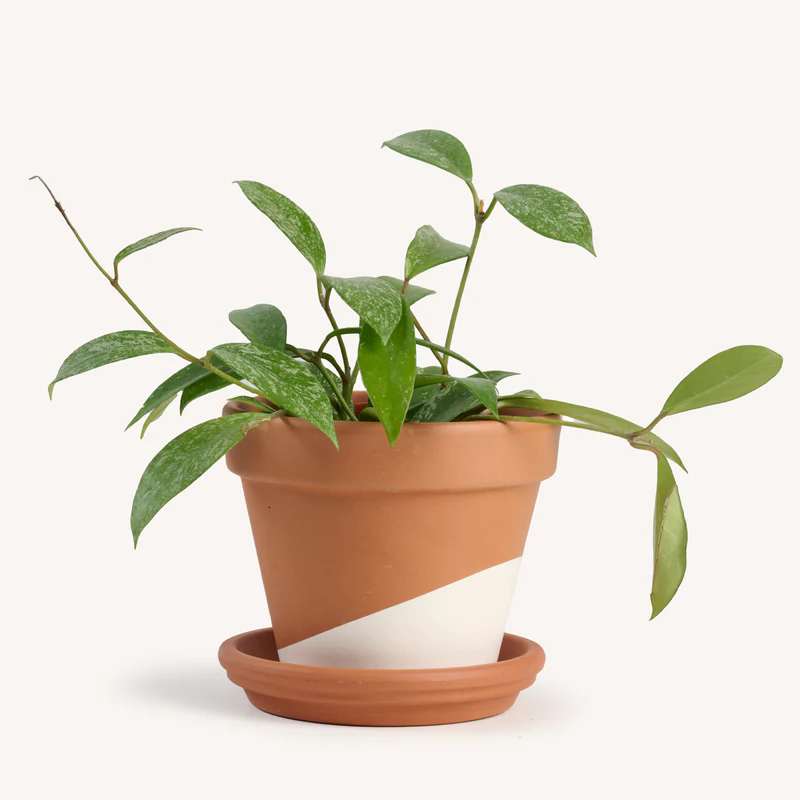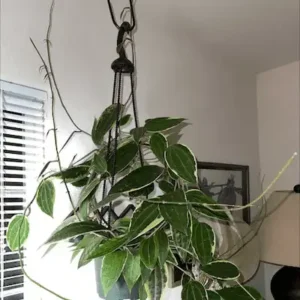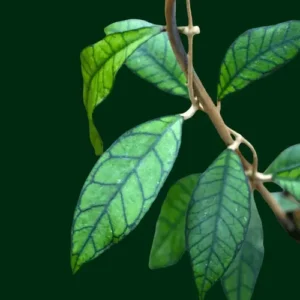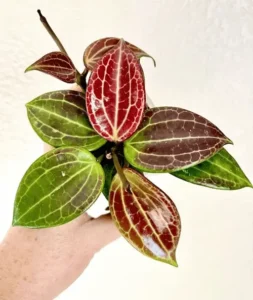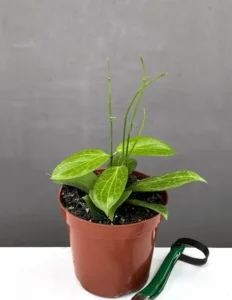Introduction
Among the many varieties of Hoya, one that stands out for its unique leaf patterns is the Hoya Splash. The Hoya Splash plant has become increasingly popular among plant collectors and enthusiasts alike, known for its stunning, speckled leaves. In this article, we’ll explore everything you need to know about the Hoya Splash plant, from its origins and care requirements to propagation techniques and benefits of growing it indoors.
A Complete Guide About the Hoya Splash Plant
Here is a complete guide about the Hoya Splash Plant that you should read for the better growth of this beautiful hoya.
Origins and Natural Habitat of the Hoya Splash Plant
The Hoya Splash plant is a cultivar of the Hoya genus, which belongs to the Apocynaceae family, commonly known as the dogbane family. The Hoya genus comprises 500 species of tropical plants, primarily native to Southeast Asia, Australia, and the Pacific Islands. These regions provide the warm, humid conditions that Hoyas thrive in, and many species are epiphytic, meaning they grow on other plants or trees without drawing nutrients from them.
The Hoya Splash gets its name from the silvery or light-colored speckles that appear on its green leaves, resembling splashes of water or paint. While this particular pattern is not found naturally in wild species, it has been cultivated to highlight these beautiful variegations. Most Hoya Splash plants are derived from species like Hoya carnosa or Hoya pubicalyx, both of which exhibit vining growth habits and produce star-shaped, fragrant flowers.
Identifying the Hoya Splash Plant
One of the most striking features of the Hoya Splash is its foliage. The leaves are thick, waxy, and succulent-like, helping the plant to store water and thrive in less frequent watering conditions. The leaves are usually green, but the silver or white splashes of variegation make this plant unique and highly sought after.
Some varieties of Hoya Splash are more dramatic in their speckling, while others have a more subtle appearance. The size of the leaves can vary, depending on the specific cultivar, but they are typically 2-4 inches long. When the plant is healthy and growing well, the vines can trail or climb several feet, making it an ideal candidate for hanging baskets or trellises.
Hoya Splash plants also produce beautiful clusters of flowers known as umbels. Each umbel can contain up to 40 individual flowers, which are small, star-shaped, and often pink, white, or purple. These flowers emit a sweet, pleasant fragrance, particularly in the evening, which is another reason why Hoya Splash plants are beloved by indoor gardeners.
Care Requirements for Hoya Splash Plant
Hoya Splash plants are relatively low-maintenance, making them great for both beginner and experienced plant parents. However, like all plants, they have specific needs that must be met to ensure they thrive. Let’s break down the care requirements for the Hoya Splash.
1. Light Requirements
Hoyas, including the Hoya Splash, are generally considered low-light tolerant plants. However, to encourage vigorous growth and more vibrant splashes on the leaves, bright, indirect light is ideal. A north or east-facing window is perfect for these plants, as they can receive plenty of light without being exposed to the harsh, direct rays of the sun, which can scorch their leaves.
If you notice the variegation fading or the plant becoming leggy, it may be a sign that it needs more light. On the other hand, if the leaves start to yellow or develop sunburn spots, it’s an indication that the plant is getting too much direct sunlight. If you’re growing your Hoya Splash in low light conditions, consider supplementing with grow lights to maintain healthy foliage and promote flowering.
2. Watering
The Hoya Splash is somewhat drought-tolerant, thanks to its thick, succulent-like leaves, which can store water. This means that it’s better to underwater this plant than to overwater it. A good rule of thumb is to allow the top 1-2 inches of soil to dry out before watering again. In the warmer months, you may need to water more frequently but always check the soil first.
Overwatering can lead to root rot, a common issue for Hoyas. Make sure your pot has adequate drainage to prevent water from pooling at the bottom. In the winter months, when the plant’s growth slows down, reduce the frequency of watering, as the Hoya splash will require less moisture during its dormant period.
3. Soil
Hoyas prefer a well-draining soil mix that mimics their natural epiphytic environment. A mix designed for cacti or succulents is a good option, but you can also create your own by combining potting soil with perlite or orchid bark. This ensures that the roots have access to both moisture and air, preventing waterlogged conditions that can cause rot.
A slightly acidic to neutral pH (6.0-7.0) is ideal for Hoyas, and adding organic material like peat moss or coconut coir to the mix can help retain some moisture while still providing excellent drainage.
4. Temperature and Humidity
As tropical plants, Hoya Splash prefers warm, humid environments. The ideal temperature range for these plants is between 60-85°F (15-29°C). They can tolerate brief periods of cooler temperatures, but prolonged exposure to cold can cause the leaves to drop or the plant to go dormant.
Humidity is also essential for Hoya Splash plants. While they can adapt to average indoor humidity levels, they thrive in higher humidity. If you live in a dry climate or run heating or air conditioning that dries out the air, consider using a humidifier or placing the plant on a humidity tray. Regular misting can also help boost humidity, but be careful not to overdo it, as excessive moisture on the leaves can lead to fungal issues.
5. Fertilizing
During the growing season (spring and summer), Hoya splash plants benefit from regular feeding. Use a balanced, water-soluble fertilizer diluted to half strength every 4-6 weeks. You can also use a fertilizer specifically formulated for flowering houseplants to encourage bloom production.
In the fall and winter, when the plant’s growth slows, reduce feeding or stop altogether. Over-fertilizing can lead to salt buildup in the soil, which can harm the plant’s roots.
Propagating Hoya Splash
Propagating the Hoya Splash is relatively straightforward and can be done through stem cuttings. Here’s a step-by-step guide to successfully propagating your hoya plant.
- Choose a healthy stem
Look for a stem with at least two or three leaves and a node (the area where leaves and roots grow from the stem).
- Cut below the node
Using clean, sharp scissors or pruning shears, cut just below the node to create a cutting that is 4-6 inches long.
- Root the cutting
You can root the cutting in water or soil. If using water, place the cutting in a jar or glass with enough water to cover the node. Change the water every few days to keep it fresh. If using soil, dip the cutting in the rooting hormone and plant it in a well-draining soil mix.
- Provide the right conditions
Place the cutting in a warm, humid environment with bright, indirect light. You can cover the cutting with a plastic bag or place it in a mini greenhouse to maintain high humidity.
- Wait for roots to develop
It can take a few weeks to a few months for roots to form, depending on the conditions. Once the roots are at least an inch long, you can transfer the cutting to a pot with soil (if it was rooted in water) and care for it as you would a mature plant.
Common Problems and How to Solve Them
While the Hoya Splash is generally a hardy plant, there are a few common issues that can arise. Here’s how to troubleshoot them:
- Yellowing Leaves
This can be a sign of overwatering or poor drainage. Check the soil and adjust your watering schedule if necessary. If the potting mix is waterlogged, repot the plant in fresh, well-draining soil.
- Leggy Growth
If the plant becomes leggy, it may not be getting enough light. Move it to a brighter location, but avoid direct sunlight.
- Pests
Common pests that can affect Hoya Splash include mealybugs, spider mites, and aphids. Regularly inspect your plant for signs of infestation, such as sticky residue or tiny webs. If you notice pests, treat the plant with insecticidal soap or neem oil.
Benefits of Growing Hoya Splash Indoors
The Hoya Splash is more than just a visually stunning plant. It also offers several benefits for indoor gardeners:
- Air Purification
Like many houseplants, Hoyas help purify the air by removing toxins such as formaldehyde and benzene, making your home environment healthier.
- Low Maintenance
With its drought tolerance and ability to thrive in indirect light, the Hoya Splash is a relatively low-maintenance plant, making it perfect for busy individuals or those new to plant care.
- Aesthetic Appeal
The unique speckled leaves and fragrant flowers make the Hoya Splash a beautiful addition to any home. Whether placed in a hanging basket, on a shelf, or climbing a trellis, it adds a touch of nature and elegance to any space.
| FAQs How do you take care of a Hoya splash plant? -Provide moderate watering conditions. -Provide bright, indirect sunlight for enough growth. -It is non-toxic to humans or pets. -It prefers dry settings. Where is the best place to put a hoya plant? Try to put a hoya plant where bright, indirect sunlight comes. The best place is to put the hoya near the window facing south or west. Do Hoyas prefer sun or shade? Hoyas prefer bright, indirect sunlight with stable room temperature and sufficient humidity. |
Conclusion
The Hoya Splash is a beautiful, versatile plant that can thrive in various indoor environments. With its striking variegated leaves, sweet-scented flowers, and relatively low-maintenance care requirements, it’s no wonder that this plant has become a favorite among plant enthusiasts. By following the care tips outlined in this article, you can enjoy the beauty and benefits of the Hoya Splash in your own home. Whether you’re a seasoned plant parent or just starting, the Hoya Splash will bring joy and life to your indoor space.

